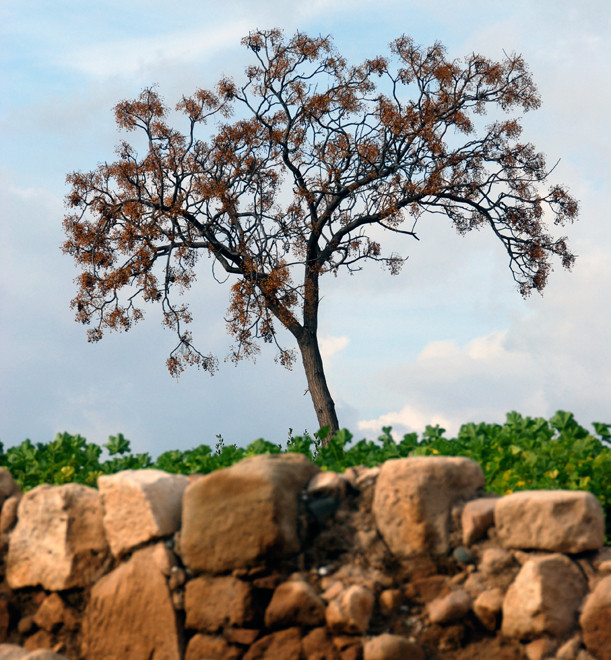Cyprus Interiors VI: The Mavromata or Chinaberry Tree
On our first visit to Cyprus we ended stopped by the closed museum in Dali in February on our way back to the airport. It took a few photos of a small holding and then back home tried to work out what this weird tree was with nothing but pale berries in the winter light.
It turns out - after much mind numbing web searching - that it is the Chinaberry Tree or Indian Beed Tree, known as 'Mavromata' ('dark eyes' due to the darker inner circles of the tree's flowers) in Cyprus (melia Azedarach). 'Melia' in Greek is 'Ash' (the leaves and twigs do resemble an Ash Tree), but the tree is a mahogany originally from India. The abundant yellow berries are toxic to humans but not birds, although birds are said to become drunk or 'high' after consuming quantities of them. Apparently Egyptian fruit bats love the fruits too (see MGS Forum).
The flesh of the berries was very waxy/gummy and had a pungent/acrid smell, almost of frankincense. The berry had a five grooved seed.
The seeds used to be used to make rosaries. The timber is like teak but under-utilised (see Wikipedia: Melia Azedarach). In the USA they are now considered an invasive species. In Cyprus they are fairly widespread and often in gardens or small-holdings. The tree is related to the Neem tree, from which the insecticide 'Neem Oil' derives.
I came across an interesting article in the Cyprus Mail on local uses of the tree's berries.
When Cyprus was abundant in water fishermen would cast the seeds into pools to stun the fish, which would become intoxicated and float to the surface; marine fishermen would bait fish traps with bunches of leaves to attract the very expensive skaros.
The plant contains a number of narcotic properties… It has been used for centuries in Asia to treat leprosy, scrofula, gonorrhoea, malaria, burns, tropical ulcers, internal and external parasites and haemorrhoids. It is antibacterial, antimicrobial and insecticide. The twigs were chewed to strengthen teeth and gums and the seed oil rubbed into the scalp to kill head lice and stimulate hair growth.
Alexander McCowen in the Cyprus Mail, 2008.


